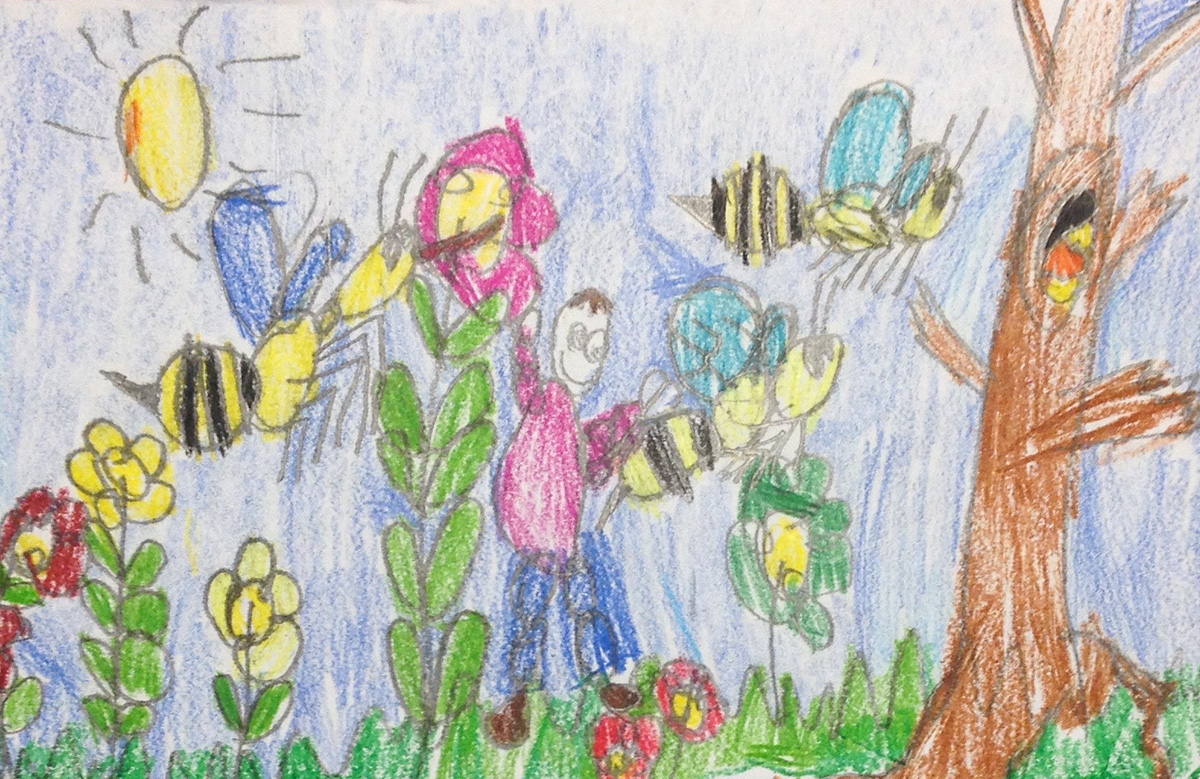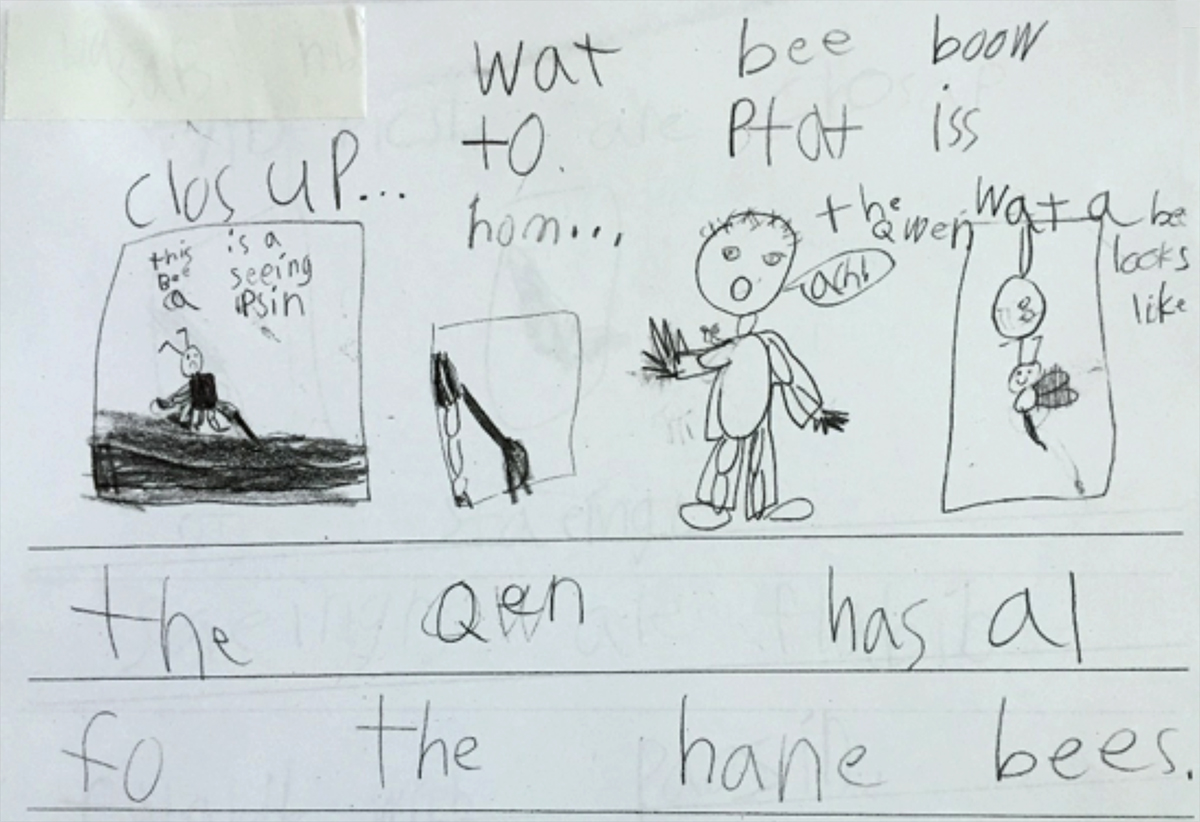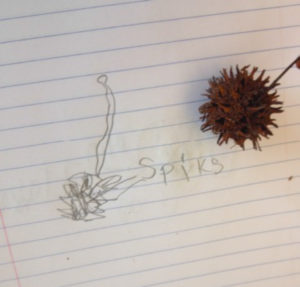Chapter 4: Why Bees? Writing Nonfiction Together In Kindergarten
4.1 Drawing and the Science Teacher: Getting Started with Nonfiction

When I began teaching Kindergarten, I was perplexed about what exactly should go into the science center and why I needed one in the first place. I suppose I was hoping that the items on display would encourage students to look closely and begin to ask questions. I wanted to set the stage, create an environment of wonder and curiosity that would pay off at the end of the year when we would be fully immersed wondering, asking questions and doing research as we read and wrote nonfiction.
I didn’t have any microscopes or ready-made kits from the teacher store. However, I did have some hand lenses and, of course, my backyard. I began collecting sweet gum seed pods, pine cones and leaves. I dug through the many rocks, shells, pieces of driftwood and jars of sand from my trips to northern Michigan as a child and put them in containers on a bookshelf in my classroom. I brought in pots of lemon balm and mint from my garden. The turtle shell from the dead turtle that I packed out of the woods on a backpacking trip as well as a parent-donated, molted tarantula skin were also put on display. As I introduced the center early in the school year, I tried to demonstrate to my students how what they did here was an important part of their work as researchers. It took a lot of explaining but I think I planted the beginnings of how to do research through the activities of the Science Center!
Besides encouraging a sense of inquiry and wonder in my young students through the Science Center, I also began the year by teaching my students how to draw during our Writing Workshop time. Through drawing young students, who do not yet have the ability to write well-developed texts, can record what they are thinking and observing and explain themselves more deeply, enhancing their messages with visual details. Further, they receive feedback as friends comment on the meaning their drawings convey. By honoring drawing as a composing process, I was helping children learn about the craft of writing.
Because we began the year with personal narratives, I began modeling how to draw people and animals using ovals. Then I used colored pencils to add clothing, skin colors and/or fur. I emphasized the importance of drawing realistically to teach my students how making their illustrations as real as possible helps the reader to understand the message they are trying to convey on the page.
Here is how Libby used the oval shape as she was illustrating her bee research (“What bees do to protect its home”); she included three “close up” fact boxes of a bee stinging a person, a stinger and the bee outside the hive. In the center of the page, is a person being stung with the appropriate speech bubble: “Ach!”

In the weeks that followed, as other writing needs took over our Writing Workshop mini-lessons, drawing lessons moved to science time. Observing and recording our observations was one aspect of thinking like a scientist. I modeled how to look carefully at various artifacts from the science center and how to draw the items as realistically as I could always emphasizing that even if it didn’t look exactly like the object, I was doing my best. After many days of modeling how to draw realistically, I made sure that the science center had a ready supply of writing tools and scraps of paper for recording observations.

Even toward the end of the year as part of a nonfiction unit on how the parts of plants help them survive, I continued to model how looking closely can help us discover new information. When drawing sweet gum seed pods, I modeled how I first noticed the sharp, spiny covering of the seed pod. I wondered aloud why this seed pod
needed to be so sharp while sharing that this is why I have to wear my shoes when I go out into my yard! After discussing that this is one way the plant is protecting its precious cargo – the seed, I decide that when I drew it, I would have to draw the spines so that my audience realized how important they are to the survival of the seed.
On another day, after germinating lima bean seeds, my curious scientists wondered about what was inside the seed. After carefully peeling the seed coat away, they were thrilled to see the tiny seed leaf inside surrounded by its “food” that would help it begin to grow. The thrill of discovery, drove them to record their observations as accurately as they could.
I couldn’t wait to see how this idea of looking closely and drawing realistically would transfer into their nonfiction work about bees. However, before we could write our nonfiction books about bees, we had a lot of work to do – reading and researching – to create our common knowledge of bees.